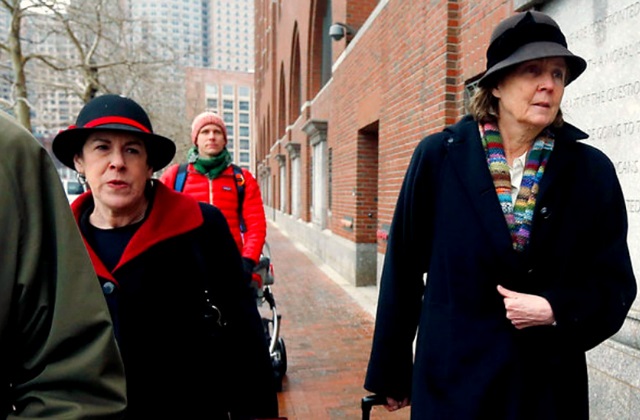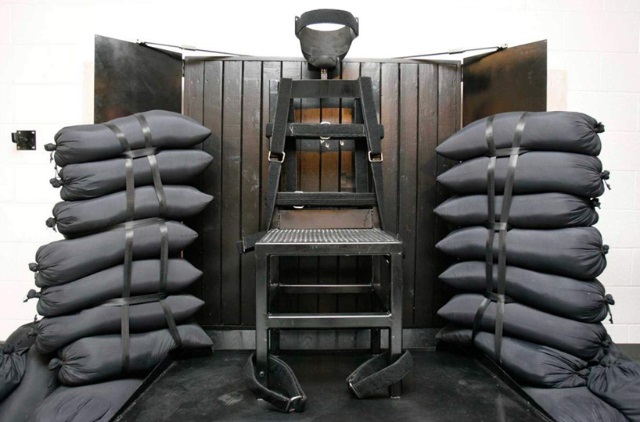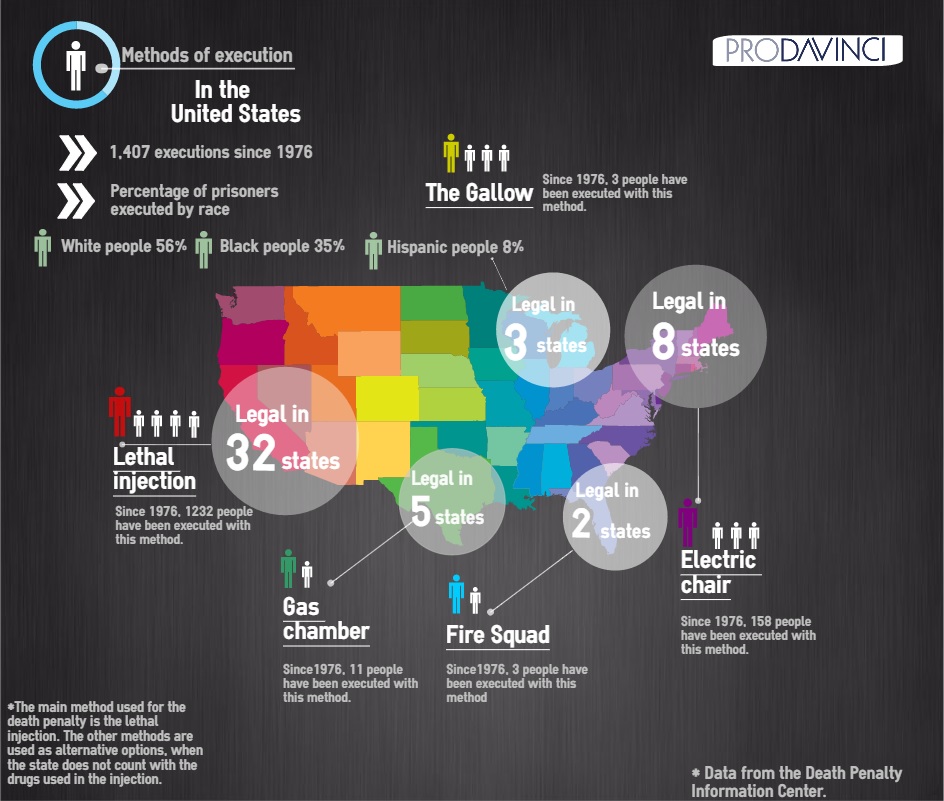Originally published in Prodavinci.com
After 96 people testified during 15 days in Boston’s court, the jury declared Dzhokar Tsarnaev guilty of 30 charges, 17 of them making him a candidate for the capital punishment. The 10 members of the jury now have a question to answer: will Tsarnaev be incarcerated for life or will he receive the death penalty?
The accused is only 21 years old and was born in Kyrgyzstan. He faces the possibility of being sentenced to death for planning and executing, alongside his older brother, Tamerlan, the terrorist attacks at the Boston’s Marathon, that resulted in the death of 3 people and more than 260 injured, when two pressure cooker bombs exploded at the finish line, as it was registered by the American Public Health Association.
Although there is no death penalty in the State of Massachusetts, Tsarnaev could receive the capital punishment for being involved in a federal case. The parents of Martin Richard, the younger victim, who passed away in the terrorist act at the age of 8, asked that the accused was sentenced to life imprisonment instead of death, to avoid successive years of appeals.
Judy Clarke is the defense lawyer who is trying to prevent Tsarnaev from being sentenced to death. Clarke has represented many of the most famous killers in the past recent times. She managed to dissuade a jury from imparting the death penalty to the famous terrorist Ted Kacszynski (also known as Unabomber), who in the 70s sent bombs by mail, and declared himself against the tech-industrial development. He also threatened the New York Times and The Washington Post, saying he would detonate more bombs if they didn’t published his manifesto. Instead of the capital punishment, he was given life imprisonment.
Other people defended by Clarke are Eric Rudolph, a Christian terrorist who placed bombs during the summer Olympics in Atlanta, and remained amongst the 10 most wanted by the FBI for more than five years, and Jared Loughner, who tried to murder Arizona Senator Gabrielle Giffords, killing 6 other people in the attempt.

Judy Clarke (right) and Miriam Conrad (left) on their way to Dzhokar Tsarnaev’s trial / Photograph by Michael Dwyer, from Associated Press.
Even though Judy Clarke has been involved in very famous cases, she usually avoids giving public statements and interviews, as she did for this article. The last interview she gave was made in 1990 by Los Angeles Times. In it, she confesses that she likes antagonism and the duel that means confronting a trail. “I love to fight, especially when it is about something that means so much to all of us, to our freedom”, she said at the time.
For many people, this is the worst case of terrorism the United States has ever experienced, right after the attack on the Twin Towers in 2001. Judy Clarke hopes to keep her record unbroken. To make it, she must convince at least 1 of the 10 members of the jury not to apply the death penalty on Tsarnaev’s case, given that, in order to sentence him for the execution, the decision must be unanimous.
Public opinion is quite divided on the matter. Seth Stevenson, a journalist winner of the ‘Online Journalism Award’ in 2005 and author of the book Grounded, is currently covering the case in Boston. In an article published on the digital magazine, Slate, Stevenson says that many people approaches him to share what they think the penalty should be for Tsarnaev. Some people say that the harshest punishment isn’t death penalty, on the contrary, it is keeping him incarcerated for the rest of his life in a “little shoe box”. Others say: “I don’t want him to be able to eat, I don’t want him to breath, I don’t even want him to be able to move his body”.
How much does the capital punishment costs?
Applying the death penalty in the United States is legal in 32 of the 50 states that conform the union. Its use is considered under the charge of killing in most of the states. A prisoner can also be given the capital punishment for rape, kidnaping, and treason, as it is documented by the Death Penalty Documentation Center.
The cost of carrying out a judicial case that could end up in a death penalty sentence is very high. A study made by the Urban Institute in 2009 says that a death penalty sentence trial could cost up to 3 million dollars in judicial expenses plus carrying out the execution, while a life imprisonment sentence can only account for 1 million dollars, 2 million less than a death sentence.
Governor of Ohio, Gary R. Herbert, recently signed a law that approves execution by firing squad, transforming the great lakes state into the second of the country where this type of execution is performed.
During a press conference, Paul Ray, member of the House of Representatives for the state of Ohio, said that bringing back the firing squad as an execution method was rather an economic decision ansering to a budget deficit: “Last year we realized that we wouldn’t be able to but the drugs that are used in a lethal injection. Basically, we have just shown we have a plan B”.

Execution chair at Utah state prison
In order to carry out the sentence, a doctor must search for the exact point where the heart is and mark it with fluorescent ink. At least 2 executioners are required. They both take their Winchester rifles, caliber 30, and only one of the rifles has real bullets while on the other there are only blank bullets. No member of the firing squad knows which gun holds lethal bullets.
Death penalty sentence has actually decayed in the world. According to Amnesty International’s data, 140 countries have abolished this type of sentence. Last year, at least 607 people were executed in 22 countries, 22% less than in 2013.
Although international law suggests that the death penalty must be limited to “grave crimes” such as assassination, in many countries this recommendation is ignored. In China –the country with most execution per year– there are 55 types of crimes that could end up in a death penalty sentence. Corruption crimes account for 15% of the death penalty sentences, while drug related offenses stand for 8%. The NGO Dui Hua estimates that China executes around 2,000 people a year. Many of the executions aren’t revealed to the public and are considered State Secret.
Amnesty International reports that after China, the countries with most executions as a result of a death penalty are: Iran, with 289 executions, Saudi Arabia, with 90, Irak, 60 and the United States, 30.
Half of the executions in Iran and Saudi Arabia are delivered to punish drug dealing. Indonesia reinstated the death penalty after declaring a “national emergency” for the increase of drug related crimes. In 2015, so far, they have executed 6 people. Terrorism is another of the main causes of the capital punishment. In Irak almost every execution happens to punish terrorism acts.
The methods of execution applied in 2014 include decapitation, hanging, lethal injection, and firing squad. In Iran, some executions are public.

Since 1988, a total of 293 accused people could have been charged with the death penalty. The Government of the United States has processed a total of 200 Federal capital punishment cases.
In 2015 alone, 13 people have been condemned and executed in the United States. The numbers say there are more cases in which life wins the battle over a possible death sentence. Nonetheless, Dzhokar Tsarnaev isn’t a regular case. He will be sentenced in the same city where the attacks took place, and the decision over his destiny could be decided under the taint of the city’s –yet to heal– open wound.

